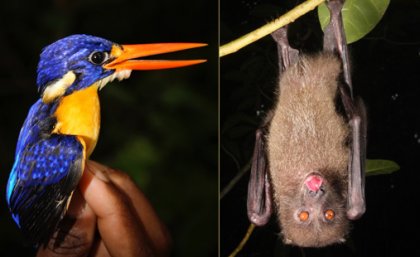
Wildlife lovers can help The University of Queensland provide free conservation textbooks to more than 250 high schools in the Solomon Islands through the UQ Giving program.
Solomon Islands Forest Life is a new textbook that documents the rich biology of the archipelago and educates readers on how to preserve and protect it.
It will be the first textbook for local students on Solomon Islands terrestrial ecology and conservation.
It has been edited by UQ School of Biological Sciences researchers Dr Tyrone Lavery and Dr Diana Fisher and the School of Civil Engineering’s Dr Patrick Pikacha.
The Solomon Islands does not yet have any national parks, and the country relies on community led conservation, Dr Lavery said.
“Many Solomon Islands schools are extremely remote, and they are often very under-resourced,” he said.
“Some have few materials such as text books available and often these are based on information from other countries.
“By distributing these books for free, we hope to complement the already deep understanding of the terrestrial environment by Solomon Islanders, allowing them to learn more and understand how to manage new threats.”
The Solomon Islands are part of a region defined by scientists as the East Melanesian biodiversity hotspot, housing large numbers of animals and plants found nowhere else on earth.
Scientists fear that many species will soon become extinct in the face of accelerating levels of habitat loss due to widespread logging, farming and climate change..
About 90 per cent of the Solomon Islands’ land mass is under Indigenous customary ownership, which means conservation decisions can be made at the local level.
“By working with communities, we have the opportunity to track and monitor rare species, some of which haven’t been seen since the late 1800s,” Dr Lavery said.
“We hope that this book will foster education and shared understanding among communities, so that locals and the global scientific community can continue to learn about the Solomon Islands flora and fauna.”
The book is part of larger community conservation and mammal species discovery projects in the Solomon Islands, supported by the Critical Ecosystem Partnership Fund, the John and Catherine MacArthur Foundation and the Australian Museum.
It joins its sister publication, Solomon Islands Marine Life, now in its third edition with more than 1500 copies distributed throughout the country.
Visit the UQ Giving Website to donate to the Solomon Islands Forest Life distribution fund.
Media: Dr Tyrone Lavery, tyrone.lavery@uq.edu.au, +61 0439 769 719.




